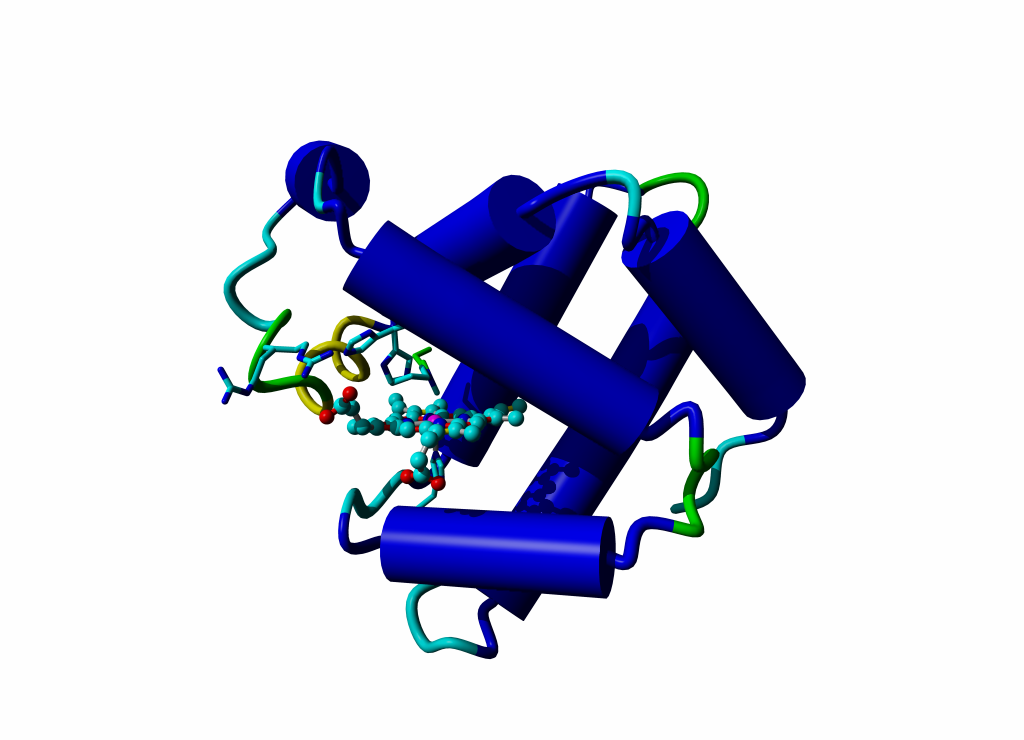Occupancy
It is normal in crystallography to not see a couple side chains because they are either
mobile or disordered in the crystal. This happens most often for Glu, Lys, and Arg, but can,
in principle, happen for each residue type and also for other 'things' (ligands, lipids, etc).
In case a structure is solved at very high resolution, one can sometimes observe that a
residue is partly observed in one rotamer, and partly in another. If the energy difference
between two rotamers is ~1 kCal/Mole, you expect 90% in the one rotamer and 10% in the other.
That might be hard to detect with crystallography, but smaller energy differences will
lead to more balanced distributions that can be detected if enough high-resolution X-ray data
is available. (With NMR it should, in principle, also be possible to see such multi-rotamer
situations, but this is not yet routinely done).
The number of side chains (and water molecules) that have multiple possible structures (locations
in case of water) tends to be limited. If the distribution is skewed (that normally means too many
alternate atom situations observed), we issue a warning which is either one of:
Strange occupancies distribution
Warning: Very strange distribution of occupancy values
Warning: Strange distribution of occupancy values
|
Obviously, occupancies cannot be higher than 1.0, and not be lower than 0.0. So, if occupancies
are observed outside this range, we issue an error message:
Strange occupancies
Error: Weights outside the 0.0 -- 1.0 range
|
In 153L (the structure with the strange B-factors, discussed earlier, we find:
Error: Weights outside the 0.0 -- 1.0 range
The atoms listed in the table below have their weight/occupancy
outside the 0.0--1.0 range. This problem is not hampering proper
WHAT IF functioning, but it is indicative of problems with the
X-ray refinement.
187 HOH ( 355 ) A - O 2.00
187 HOH ( 216 ) A - O 2.00
|
We checked if these waters might actually be ions, but without looking at the density maps
we cannot find indications for that. So, something weird happened but we don't know what...
Often it is not really a problem if the sum isn't really 1.0. In 108M we find:
Residue Occupancy
46 ARG (45-) A - 0.98
65 HIS (64-) A - 0.98
|
Which, given that at 2.7 Ångström resolution it is almost impossible to refine
with alternate atoms, seems more indicative of poor math skills 0.53+0.45=0.98 and not
0.53+0.45=1.00, than of a true occupancy determination. Again, this is probably not a
crucial problem, but for each error found, one remains unnoticed... The situation is as
follows:

|
Figure 23. The funny C-N-C-C-C-C molecule binds to the Fe in the heme in two different
ways. One of the two alternates overlaps with the His that therefore needs a new rotamer
and Arg makes space for that His-rotamer. I coloured the alternate positions for
the C-C-C-C bit of the green C-N-C-C-C-C molecule blueish.
|
